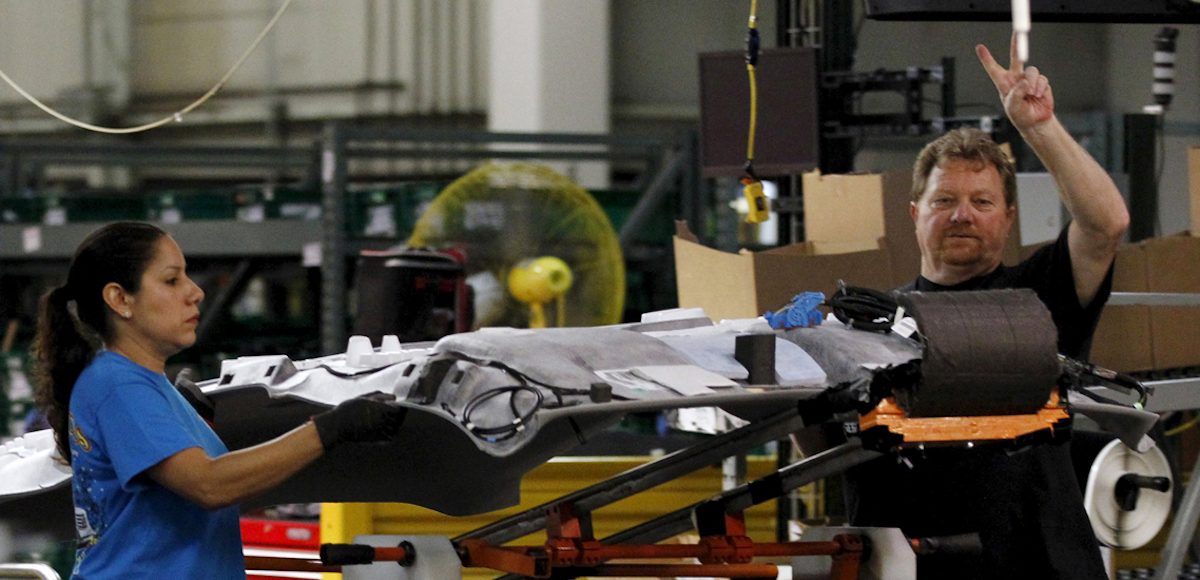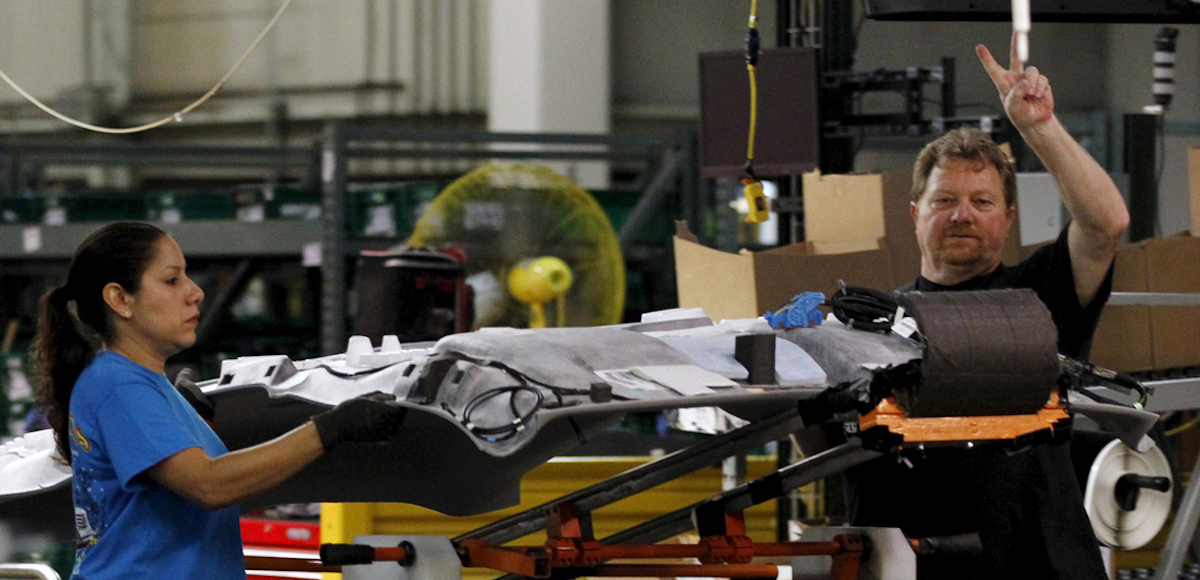

A International Union, United Automobile, Aerospace and Agricultural Implement Workers of America (UAW) worker gestures at the General Motors Assembly Plant in Arlington, Texas June 9, 2015. (Photo: Reuters)
The Texas Manufacturing Outlook Survey showed regional factory activity grew at the strongest pace in more than a decade, indicating rapid growth over the month of December.
The production index soared 18 points to 32.8 this month, the highest its been in 11 years. The general business activity index and the company outlook index posted double-digit increases, coming in at 29.7 and 31.5, respectively. Both the latter components are also the highest they’ve been since 2006.
Labor market indicators also suggest much more rapid employment growth and longer workweeks in December. The employment index came in at 20.4, an increase in 14 points from November. More than 30% of firms reported net hiring, compared with 11% reporting net layoffs.
The hours worked index shot up to 23.3, a 12-year high.
Upward pressure on prices (inflation) continued in the month of December, while upward wage pressures not only continued but intensified. The raw materials prices index remained unchanged at 32.5 and the finished goods prices index ticked up to 17.9. The wages and benefits index shot up 11 points to 25.1.
Looking to the future, price expectations increased notably for a second month in a row. The index of future finished goods prices increased significantly to 42.7, up from 18.9 in October and 35.8 in November. That’s more than 20 points above its series average.
Further, expectations of future business conditions remained highly optimistic. The index of future general business activity ticked up to 40.9, while the index of future company outlook was unchanged at 40.1. The Trump Administration has clearly presided over — if the cause of — renewed optimism in the sector.
Panel Comments
“Due to NAFTA (North American Free Trade Agreement) fears, companies had scaled back orders in 2017. But looking forward to 2018 and 2019, there has been communication that existing customers and new customers alike are interested in localizing business from the U.S. and Asia into Mexico.”
“If those who oppose Trump are successful, I believe business will be significantly affected, which is why I remain neutral on the six-month outlook even though, on paper, I should have a positive outlook with the tax-break promise.”
Next release: Monday, January 29
About the Texas Manufacturing Outlook Survey
Data were collected Dec. 12–20, and 104 Texas manufacturers responded to the survey. The Dallas Fed conducts the Texas Manufacturing Outlook Survey monthly to obtain a timely assessment of the state’s factory activity. Firms are asked whether output, employment, orders, prices and other indicators increased, decreased or remained unchanged over the previous month
Survey responses are used to calculate an index for each indicator. Each index is calculated by subtracting the percentage of respondents reporting a decrease from the percentage reporting an increase. When the share of firms reporting an increase exceeds the share reporting a decrease, the index will be greater than zero, suggesting the indicator has increased over the prior month. If the share of firms reporting a decrease exceeds the share reporting an increase, the index will be below zero, suggesting the indicator has decreased over the prior month. An index will be zero when the number of firms reporting an increase is equal to the number of firms reporting a decrease. Data have been seasonally adjusted as necessary.






